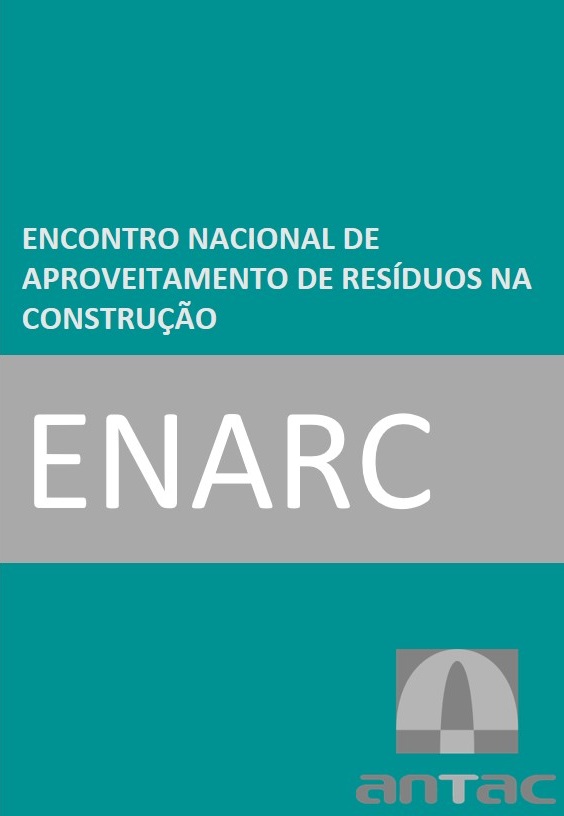Mechanical evaluation of the use of recycled asphalt pavement for a silty soil stabilization
DOI:
https://doi.org/10.46421/enarc.v8i00.3692Keywords:
Pavement, Soil stabilization, RAPAbstract
Currently, in Civil Engineering, measures such as recycling, and reuse are essential in the practices of the profession. Therefore, in the field of flexible pavement there are several initiatives to use materials from the milling of the asphalt layer of the pavement. The milled material, when discarded incorrectly, becomes an aggressive waste to the environment, making its reuse necessary. Thus, the object of this study is to verify the application of the milling residue in the stabilization of a silty soil, to use the mixture of materials in the pavement layers. For this purpose, the recycled asphalt pavement (RAP) was incorporated into the soil, in proportions of 25;50 and 75%, and its physical and mechanical properties were verified through granulometry, compaction and California Bearing Ration (CBR) tests. The results showed that as RAP was added, the maximum dry specific density increased, the optimum moisture content decreased, and the soil expansion decreased. However, although there was a decrease in expansion, there was no significant variation in the CBR value, so that the mixtures can be applied to other layers of the flexible pavement, it does not meet the minimum DNIT conditions for use in base and sub-base layers.
References
ASSOCIAÇÃO BRASILEIRA DE NORMAS TÉCNICAS. ABNT. NBR 6457: Amostras de solo – Preparação para ensaios de compactação e ensaios de caracterização, Rio de Janeiro, RJ, 8p. (2016a)
ASSOCIAÇÃO BRASILEIRA DE NORMAS TÉCNICAS. ABNT. NBR 7181: Solo – Análise Granulométrica, Rio de Janeiro, RJ, 13p. (2016b)
ASSOCIAÇÃO BRASILEIRA DE NORMAS TÉCNICAS. ABNT. NBR 7182: Solo – Ensaio de Compactação, Rio de Janeiro, RJ, 10p. (2016c)
ASSOCIAÇÃO BRASILEIRA DE NORMAS TÉCNICAS. ABNT. NBR 9895: Solo – Índice de Suporte Califórnia, Rio de Janeiro, RJ, 14p. (2016d)
BALBO, J. T. (2007). Pavimentação Asfáltica: materiais, projeto e restauração. São Paulo: Editora Oficina de Textos, 2007. 557p.
BERNUCCI, L. B., et al. (2006). Pavimentação Asfáltica – Formação Básica para Engenheiros. Rio De Janeiro: Petrobrás; Abeda, 504p.
BONFIM, V. (2007). Fresagem de Pavimentos Asfálticos. 3 ed., São Paulo, Fazendo Arte Editora, 128p.
DNIT (2006). Manual de Pavimentação. 3ed. – Rio de Janeiro, 274p.
GONÇALVES, C. E. R. (2019). Estudo de estabilização de solos utilizando material fresado e cimento. Trabalho de conclusão de curso, Universidade Estadual do Maranhão.
MEDINA, J. E MOTTA, L.M.G. (2005). Mecânica dos Pavimentos. 1 ed. Rio de Janeiro: Editora UFRJ, 574p.
SPECT, L. P., et al. (2013). Utilização de material fresado como camada de pavimento: Estudo laboratorial e aplicação em campo. 42ª RAPv: Reunião Anual de Pavimentação 2013, Blumenau, SC.
SILVA, E. S. (2013). Utilização de resíduo de fresagem de pavimentos asfálticos em bases estabilizadas granulometricamente e em revestimentos asfálticos na cidade de Manaus. Dissertação (Mestrado em Engenharia Civil) - Universidade Federal do Amazonas, Manaus. 219 f.
VIEIRA DE ARAÚJO JUNIOR, L.P. (2019). Estudo sobre estabilização de solo com material fresado de pavimentação asfáltica. Dissertação (mestrado) – Universidade Federal de São Carlos, São Paulo. 122f.

